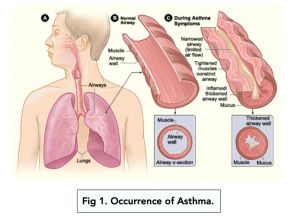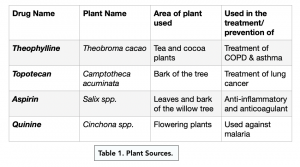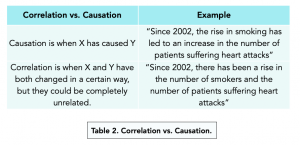Lung Disease (A-level Biology)
Lung Disease
Pathologies of the Human Respiratory System
Pollutants
Pollutants interfere with the respiratory system. Below is a list of possible pollutants:
- Tobacco smoke: damages the cilia lining the respiratory system. This damage can result in the build-up of mucus along with a persistent cough.
- Asbestos: these small particles stick themselves within the lungs tissue, causing damage.
- Fungal spores: people who are immunocompromised are particularly prone to severe infections due to these spores.
- Pollution has similar effects as smoking. Pollutants in the air such as nitrogen oxides, as well as dust and debris, can seriously damage lungs. Pollution can cause emphysema, chronic bronchitis, and in some instances, lung cancer.
Chronic Obstructive Pulmonary Disease (COPD)
A build-up of any of these pollutants over time can result in the lining of the lungs, trachea and airways inflaming, known as chronic obstructive pulmonary disease (COPD).
COPD is a collection of non-infectious diseases commonly caused by pollution and tobacco smoke.
Symptoms include:
- Shortness of breath: this is due to the loss of elastin in the lungs.
- Chronic cough: as the cilia are damaged, mucus cannot travel up through the trachea, causing irritation in the throat. Therefore, this leads to scarring of the lungs.
- Blue skin appearance: low levels of oxygen in the blood lead to a blue looking appearance.
- Wheezing
- Fatigue
- Sputum production
Though there is not a cure for COPD, there are many ways you can relieve the symptoms and reduce the progression. One such way is to stop smoking, something which accounts for around 80-90% of all COPD cases.
Chronic Bronchitis
Chronic bronchitis requires symptoms to persist for more than 3 months before being diagnosed.
- More mucus is produced as cilia are destroyed. As the tar in cigarettes destroys the cilia and causes the mucus glands to enlarge, more is produced whilst less is able to travel up through the trachea.
- Irritation leads to scar tissue. An accumulation of mucus in the bronchioles irritates the smoker, causing them to attempt to rid it by coughing. Scar tissue then replaces the epithelium (a process known as fibrosis), resulting in a narrowing of the airway, creating a difficulty in breathing.
- Bacteria gathers. The accumulation of mucus allows for bacteria to gather, such as that causing pneumonia, leading to more inflammation and narrowing.
Fibrosis
- Fibrosis involves scarring of the lungs. In fibrosis, there is scarring of the walls of the lungs. The walls lose their elasticity. COPD and chronic bronchitis involve fibrosis.
- Fibrosis leads to a fall in lung volumes. The loss of elasticity means that the lungs struggle in ventilation, so there is a lower tidal volume, FEV1 and FVC.
- Fibrosis increases diffusion distance. Fibrosis leads to thicker walls, so the diffusion distance for gases increases, hence there is less efficient gas exchange.
Emphysema
Whilst predominantly caused by exposure to cigarette smoke, occasional types of emphysema are inherited.
- Cigarette smoke destroys alveoli. Cigarette smoke can destroy alveoli, leading to a disease known as emphysema. Emphysema reduces the efficiency of normal gas exchange.
- There is breakdown of elastin. The emphysema occurs due to breakdown of elastin in the walls of alveoli. Elastin enables alveoli to stretch (during inhalation) and recoil (during exhalation), so gas exchange is affected. Elastin breakdown also leads to breakdown of alveoli.
- Alveoli can fuse together. Breakdown of alveoli can lead to large air sacs which have smaller surface area to volume ratios.
- Lung tissue dilates and thickens. This results in the rate of diffusion decreasing between gases such as oxygen and carbon dioxide.
- Symptoms include shortness of breath. A reduction in normal gas exchange reduces the smoker’s ability to do physical activity, and results in poor oxygenation of peripheral tissues such as fingers.
Airway Disease
- Cigarette smoke can destroy lung tissue. Chemicals in cigarette smoke such as tar can also severely damage or obstruct airways
- Smoking can also cause inflammation of airways. Cigarette smoke can damage ciliated epithelial cells, which leads to accumulation of debris in the airways. This causes an individual to cough excessively. This coughing, along with cigarette smoke itself, can inflame the open airways, resulting in diseases such as: chronic bronchitis and chronic obstructive pulmonary disease (COPD).
Lung Cancer
Cigarettes can cause lung cancer. Cigarette smoke contains many carcinogens (chemicals which can cause cancer). Smoking is the number one cause for lung cancer, as well as oral cancer. Both cancers can be fatal.
Symptoms:
- Persistent cough
- Sputum (occasionally with the presence of blood)
- Shortness of breath
- Wheezing
- Weight loss
- Fatigue / lack of energy
Many forms of lung cancer exist. The risk factors and the type of cells which grow to become cancerous depend on which type of cancer is caused.
Types of treatment depends on many factors. How early the cancer is identified, if the cancer has spread to any other organs or glands and the characteristics of the patient are all taken into account to determine the best possible treatment plan. Surgery, chemotherapy and/or radiotherapy are all options.
Asthma
- Asthma is very common. Asthma is one of the most common diseases afflicting the human respiratory system. It is more common in those who usually suffer from hay fever or skin conditions such as eczema.
- Risk factors include: cold weather, exercise, stress and air pollution. Unlike other lung diseases, asthma doesn’t cause fibrosis and the surface area of the alveoli is not affected.
- Asthma occurs due to obstruction of the airways. In asthma, there is inflammation in the airways and bronchoconstriction (constriction of the bronchioles). This is caused by an allergic reaction to an allergen (e.g. pollen), causing an ‘asthma attack’.
- Bronchoconstriction disrupts breathing. Bronchoconstriction leads to a reduction in normal ventilation of the lungs and deprives the body of oxygen. If left untreated, a sudden asthma attack can be fatal. Asthma leads to reduced FEV1.
- Severe asthma attacks can be treated with adrenaline. Adrenaline is a bronchodilator and helps to re-open obstructed airways.
- Medications used help to dilate the bronchioles. As the respiratory tract is lined with receptors, such as beta-receptors and cholinergic receptors, medications are designed specifically to target these:
- Salbutamol – this relaxes the bronchiole’s smooth muscle for a short period of time.
- Steroids (Prednisolone) – helps to reduce the inflammatory response.
- Salbutamol – this relaxes the bronchiole’s smooth muscle for a short period of time.

Anaphylaxis
- Anaphylaxis is an extreme allergic reaction. Anaphylaxis is a medical condition which results in obstruction of airways due to severe allergies. Asthma can cause anaphylaxis. Histamines produced by the immune system against various allergens can lead to rapid bronchoconstriction which deprives the body of oxygen.
- Anaphylaxis can be treated with a bronchodilator. For example, epinephrine is a bronchodilator which helps re-open obstructed airways.
Medicinal Drugs
Plant Sources
Drugs can often be manufactured from plant sources. Below is a table of medicines which stem from plants:

Application and Data Questions
Risk Factors of Lung Disease
Above we discussed the effects of pollution and smoking. Here are some tips for the data questions:
- Read data and graphs carefully. It is important not to be tricked out by units or axis. For example, if they give you a table, check to see that there are no units in the rows at the top, e.g. the data could be in thousands (000s). For graphs, carefully look at the axis.
- Describe, explain, discuss. Understand the key words of the question. Describe means that you have to just factually explain the data or graph. Using figures is useful to gaining marks. Explain means you have to describe what is happening and then give a reason for it, often involving science. Discuss means that there may be arguments for and against, or some evaluation to do.
It is important to understand correlation and causation. See the table below for further details:

Government Intervention
Experiments have shown that certain things like pollution and smoking cause lung disease. This has sparked governments into enforcing certain laws. For example:
- Ban on smoking in restaurants. The link between smoking and lung disease was a driver behind the ban on smoking in public places such as restaurants.
- Images of lung disease on smoking packets. The government have a statutory law enforcing that smoking packets must have off-putting images such as diseased lungs to deter smokers.
- Restriction on cars. The link between air pollution and lung disease has led to tighter control on emissions and pollution. This has also contributed to schemes such as the congestion charge.
Lung disease refers to any condition that affects the lungs and impairs their ability to function properly.
The different types of lung disease include chronic obstructive pulmonary disease (COPD), asthma, pneumonia, lung cancer, and interstitial lung disease.
Chronic obstructive pulmonary disease (COPD) is a group of lung conditions that cause breathing difficulties and airflow obstruction.
Asthma is a lung condition characterized by inflammation and narrowing of the airways, which can make breathing difficult.
Pneumonia is an infection of the lungs that causes inflammation and fluid buildup in the air sacs.
Lung cancer is a type of cancer that originates in the lungs and can spread to other parts of the body.
Interstitial lung disease refers to a group of lung conditions that cause inflammation and scarring of the lung tissue.
The common symptoms of lung disease include shortness of breath, coughing, wheezing, chest pain, and difficulty breathing.
Lung disease is diagnosed through a combination of physical examination, medical history, imaging tests, and lung function tests.
The common treatments for lung disease include medications, oxygen therapy, surgery, and lifestyle changes, such as quitting smoking.
Yes, some types of lung disease can be prevented by avoiding exposure to risk factors, such as smoking, air pollution, and respiratory infections. Maintaining a healthy lifestyle, such as regular exercise and a balanced diet, can also help to reduce the risk of lung disease.
Understanding lung disease is important in A-Level Biology because it provides insight into the anatomy and function of the lungs and the mechanisms of respiratory diseases. This knowledge is essential for a wide range of applications, from developing new treatments for lung disease to improving public health policies.





Still got a question? Leave a comment
Leave a comment